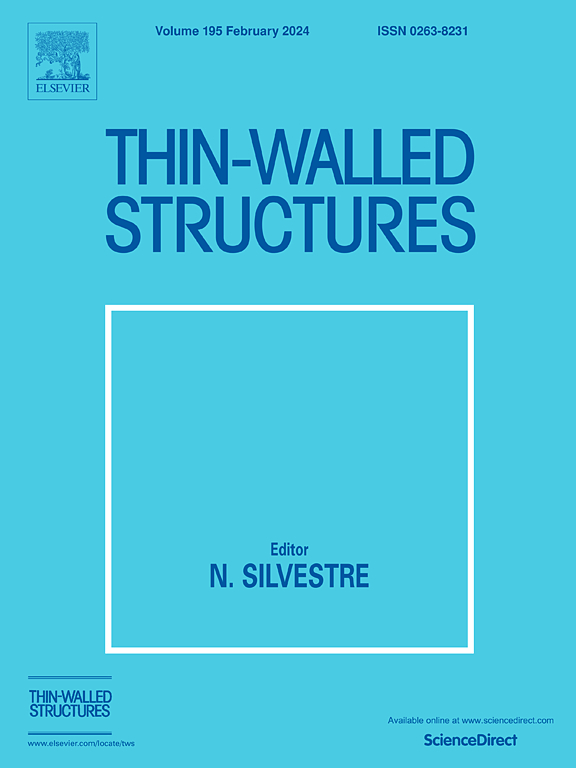Preparation and quasi-static compressive behavior of fiber-reinforced truncated conical shells
IF 5.7
1区 工程技术
Q1 ENGINEERING, CIVIL
引用次数: 0
Abstract
Truncated conical shells have numerous applications in aerospace and other engineering fields. However, they have been studied far less extensively than cylindrical shells, and even scarcer research has been done on truncated conical shells made of continuous fiber-reinforced composites. This paper presents a novel fabrication method using unidirectional fiber prepregs to produce conical shell specimens with varying ply angles and stagger angles. Quasi-static compression tests were conducted to obtain fundamental metrics such as load-displacement curves and specific energy absorption. More importantly, a finite element simulation approach, named Partition Approximation Method, was developed. Comparisons with common modeling methods demonstrated that the Partition Approximation Method more effectively predicts the compression response and damage modes. The results indicate that composite conical shell structures exhibit high energy absorption characteristics and relatively smooth stress plateaus due to their progressive failure mechanisms. Designs with stagger angles of 12° and 24° were found to significantly enhance the specimens' compression stability and specific energy absorption performance.
求助全文
约1分钟内获得全文
求助全文
来源期刊

Thin-Walled Structures
工程技术-工程:土木
CiteScore
9.60
自引率
20.30%
发文量
801
审稿时长
66 days
期刊介绍:
Thin-walled structures comprises an important and growing proportion of engineering construction with areas of application becoming increasingly diverse, ranging from aircraft, bridges, ships and oil rigs to storage vessels, industrial buildings and warehouses.
Many factors, including cost and weight economy, new materials and processes and the growth of powerful methods of analysis have contributed to this growth, and led to the need for a journal which concentrates specifically on structures in which problems arise due to the thinness of the walls. This field includes cold– formed sections, plate and shell structures, reinforced plastics structures and aluminium structures, and is of importance in many branches of engineering.
The primary criterion for consideration of papers in Thin–Walled Structures is that they must be concerned with thin–walled structures or the basic problems inherent in thin–walled structures. Provided this criterion is satisfied no restriction is placed on the type of construction, material or field of application. Papers on theory, experiment, design, etc., are published and it is expected that many papers will contain aspects of all three.
 求助内容:
求助内容: 应助结果提醒方式:
应助结果提醒方式:


